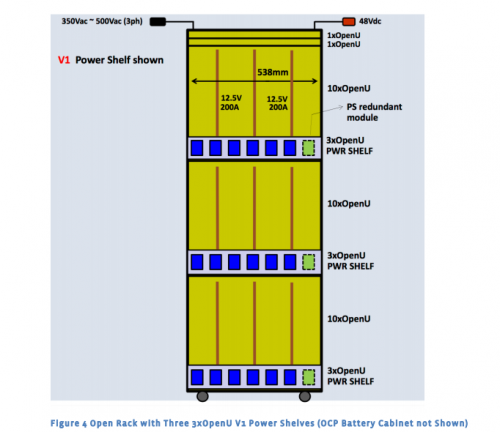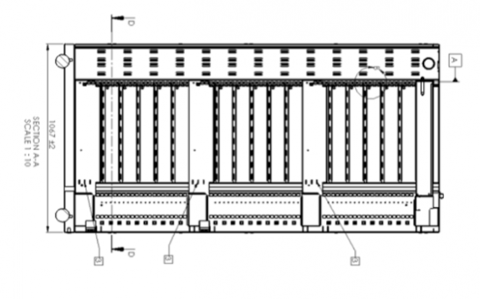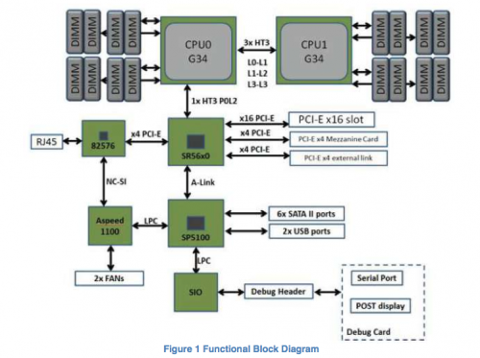The Open Compute Project has published the final specification of the Open Rack Specification, which widens the traditional server rack to more than 23 inches. Specifically, the rack is 600 mm wide (versus the 482.6 mm of a 19-inch rack), with the chassis guidelines calling for a width of 537 mm. All told, that’s slightly wider than the 580 mm used by the Western Electric or ETSI rack. The Open Compute Project said that changes in the new 1.0 specification include a new focus on a single-column rack design. The new dimensions now accommodate hotter inlet temperatures of between 18 to 35 degrees Celsius and up to 90 percent humidity, which reflects other Open Compute designs and real-world data center temperatures, according to project documents. Facebook has led the implementation of the Open Compute Project, which publicly shares the designs it uses in data centers, including its Prineville, Ore. facility. As the spec clearly shows, however, the new designs deviate from the traditional configurations and specifications, which means data center operators will need to find and then source racks from third-party vendors (or, in the case of Facebook, design their own). Facebook’s current Open Rack implementation is divided into 48mm tall sections, each called an OpenU (with 2.5 mm gaps to provide clearance between the slots). It can be used as a server rack, storage box or other configuration. (Typical 1U heights are 44.45 mm.) Facebook uses an Open Rack server divided into three power zones (although just one is needed), complete with two Ethernet switches installed at the top of the rack above the topmost power zone. Facebook suggests that the maximum height of the rack including power and IT equipment is (41 x OpenU), where each power zone is (10 x OpenU) high plus a (3 x OpenU) power shelf, with (2 x OpenU) for switches, for a total height of 2100mm. Above that, designers should begin worrying about structural integrity, Facebook warned. A power zone comprises an equipment bay for the compute, storage and other components, and a power shelf for powering the compute components in the equipment bay. The power shelf can include backup power capability using an external Open Compute Project Battery Cabinet. If there are multiple power zones, they are stacked one above another. Facebook said that three pairs of bus bars are installed at the rear of each of the three power zones in the rack. Each bus bar pair can support up to 5 kW DC or 15 kW per power zone, or 12.6 kW per rack. But Facebook’s implementation is designed for electrical and thermal efficiency, and uses only three power zones of 4.2kW DC each, equivalent to 12.6kW (3x4.2kW) per rack. The Open Compute Project has published the spec (PDF), the rack (ZIP) and PDU (ZIP) mechanical files, as well as the design guide, the latter of which is still in a 0.6 version status.


